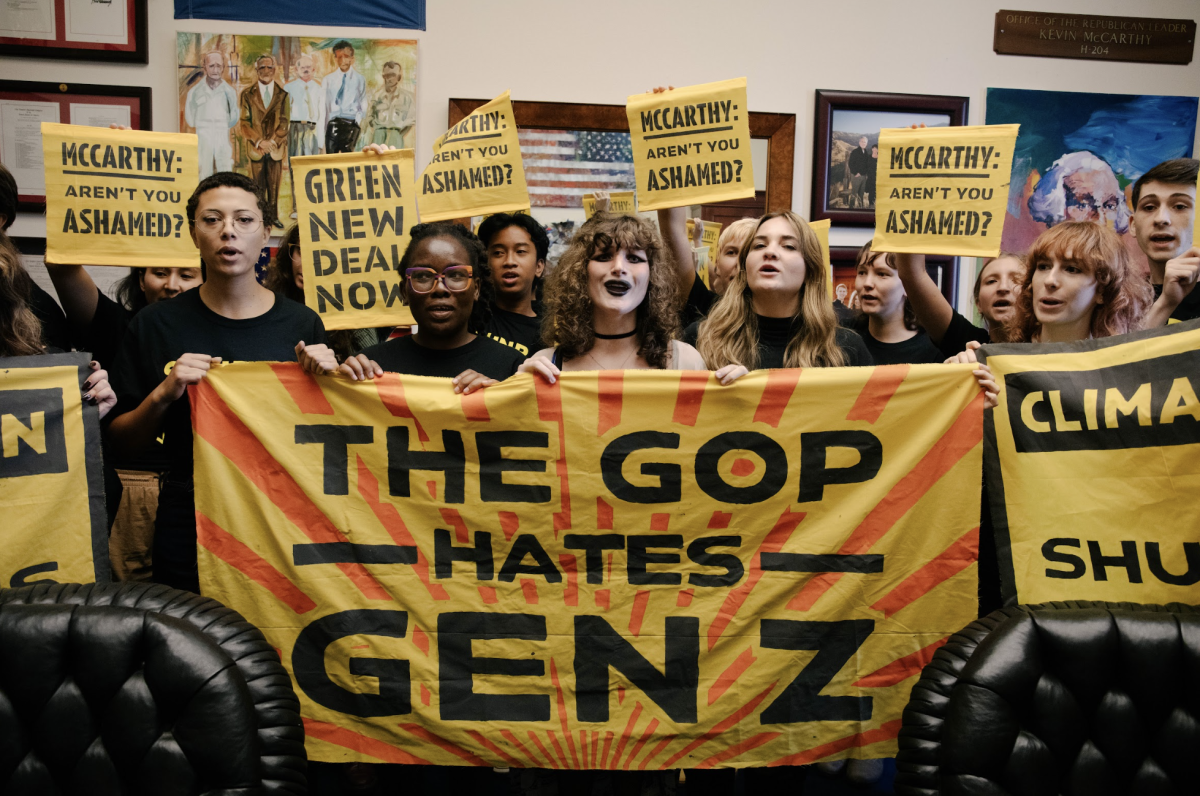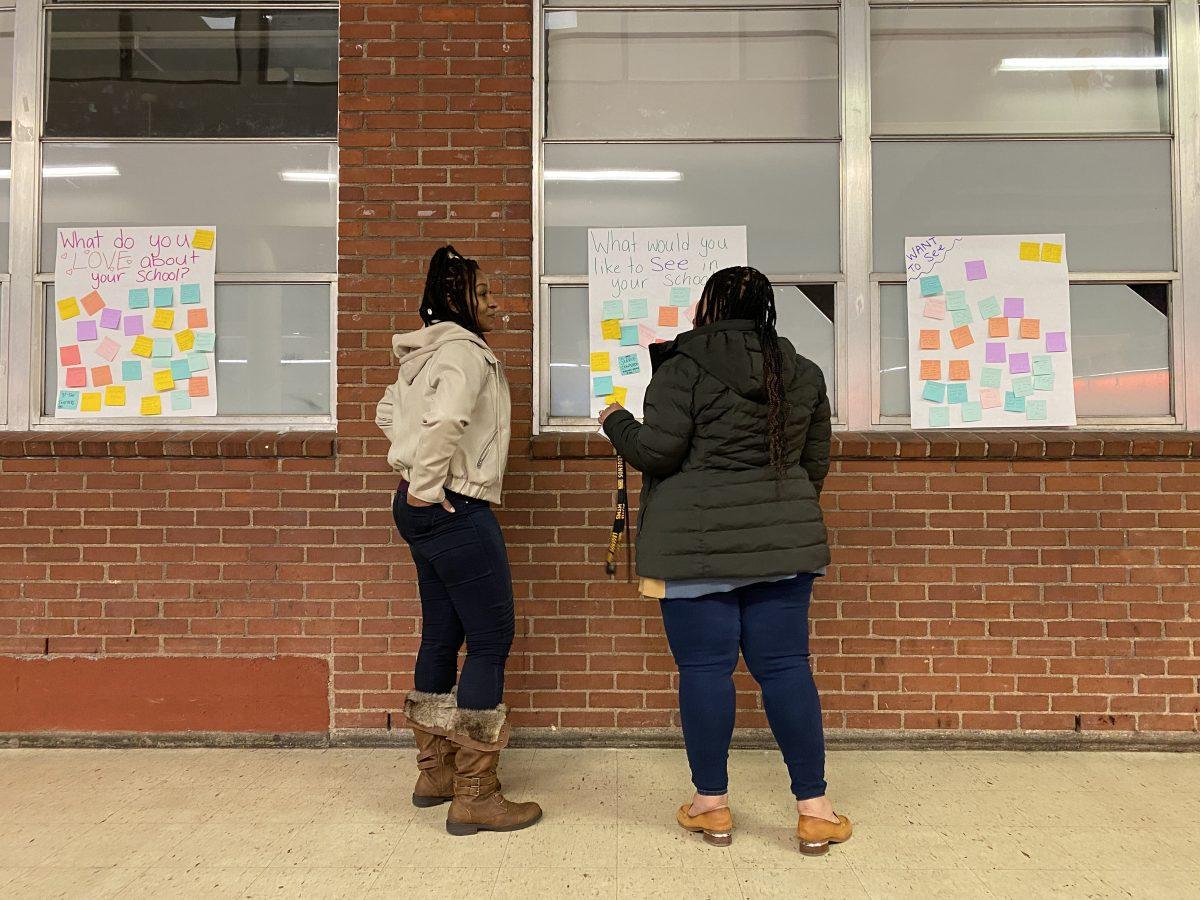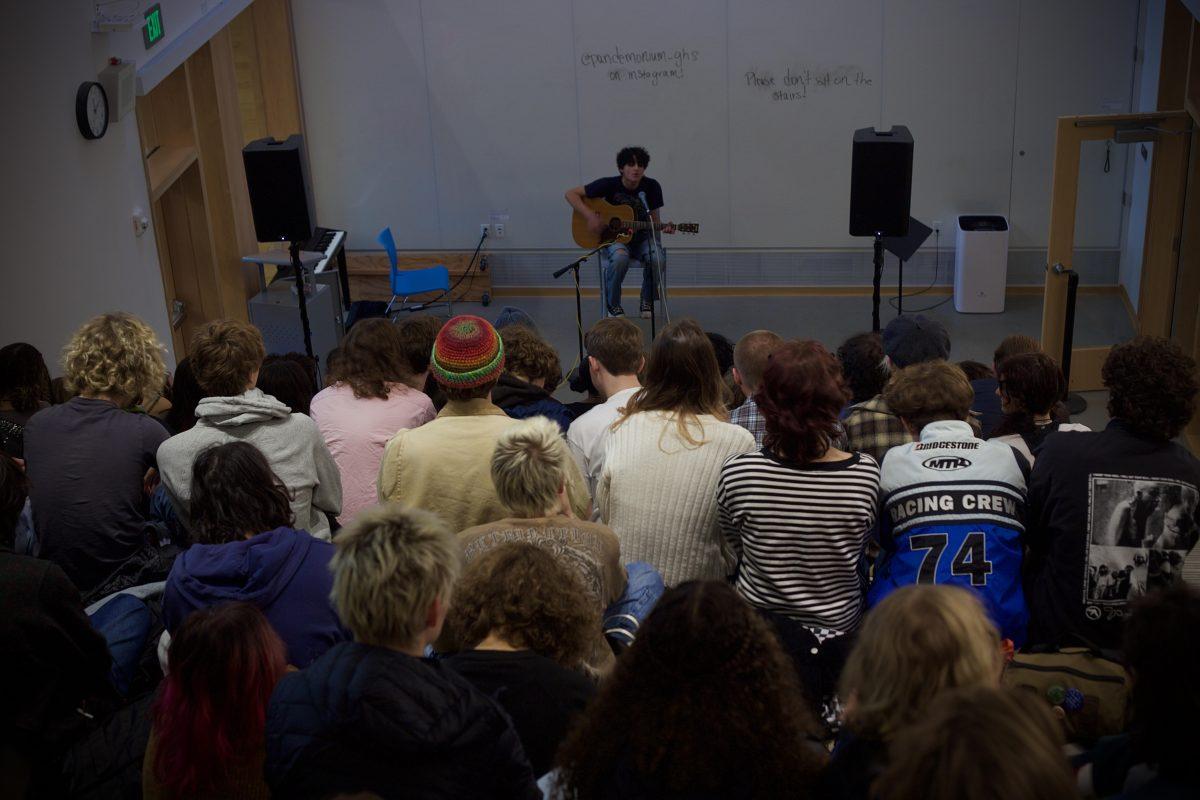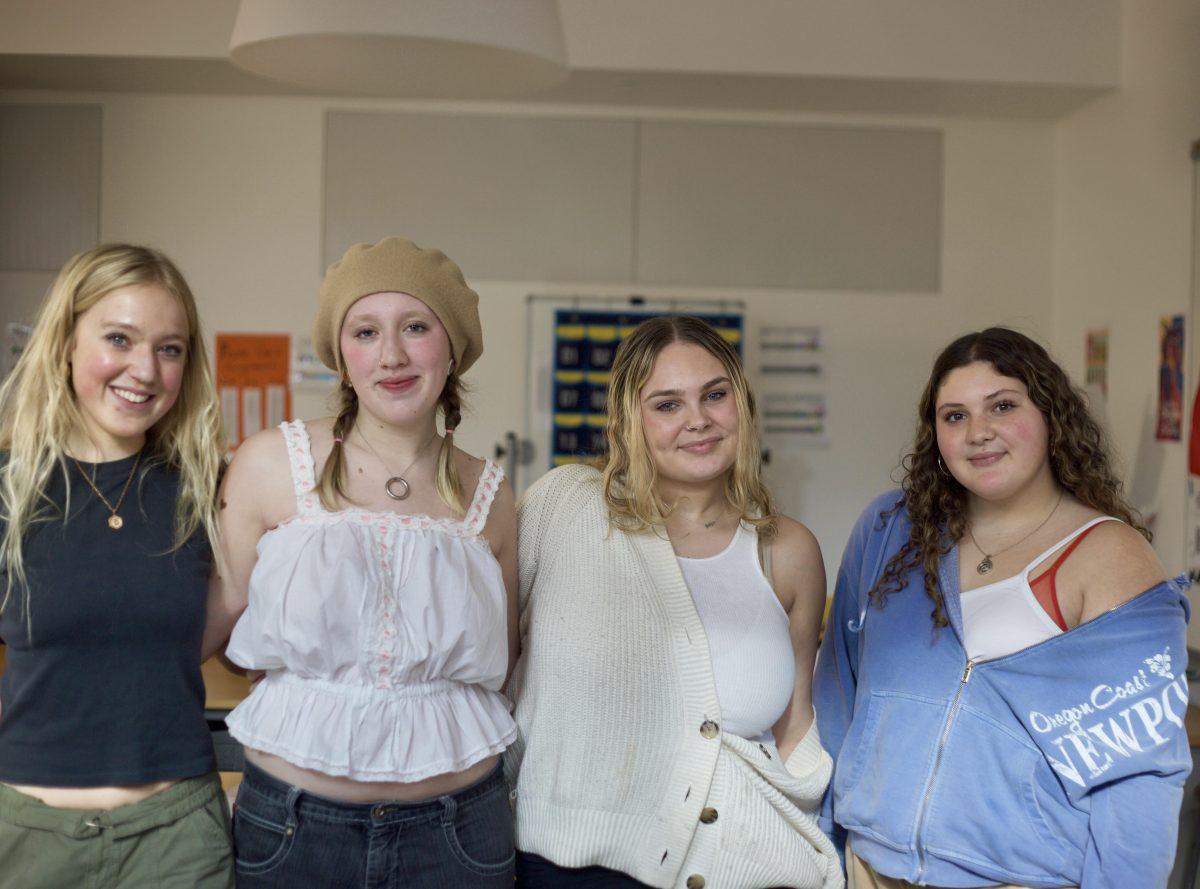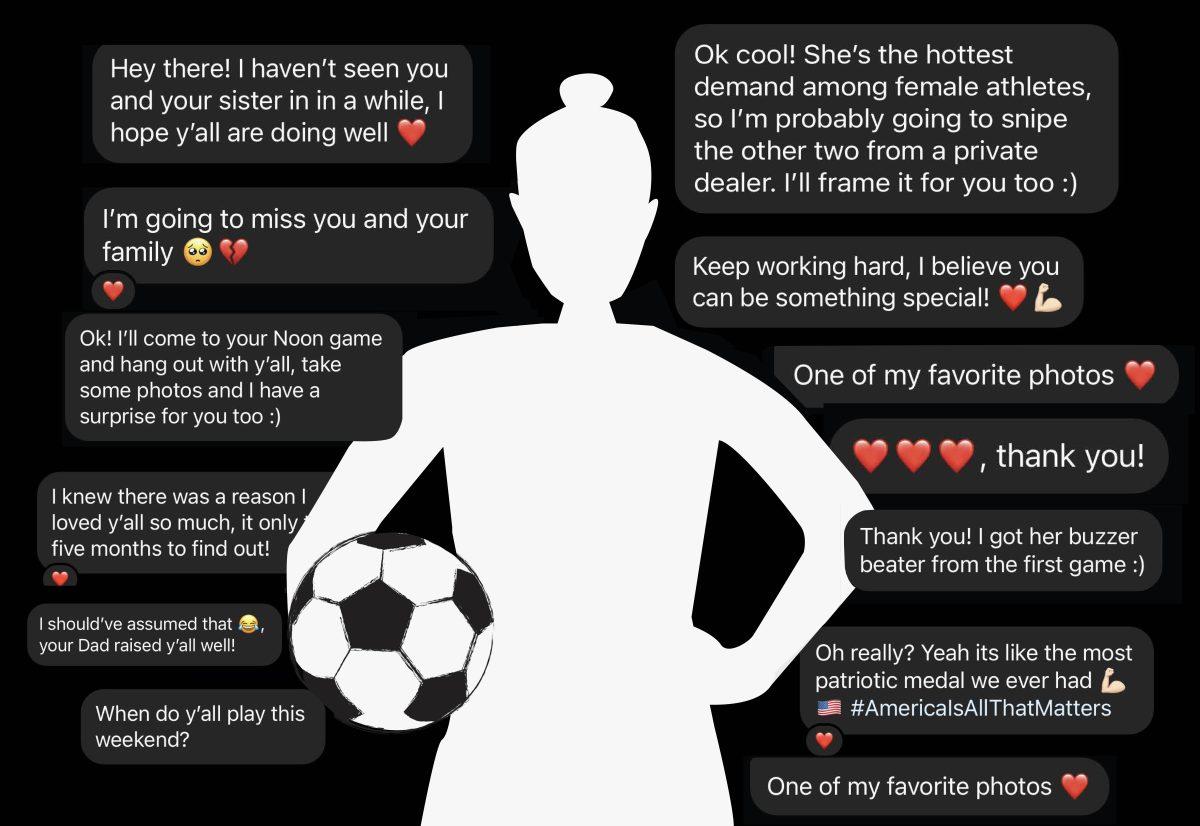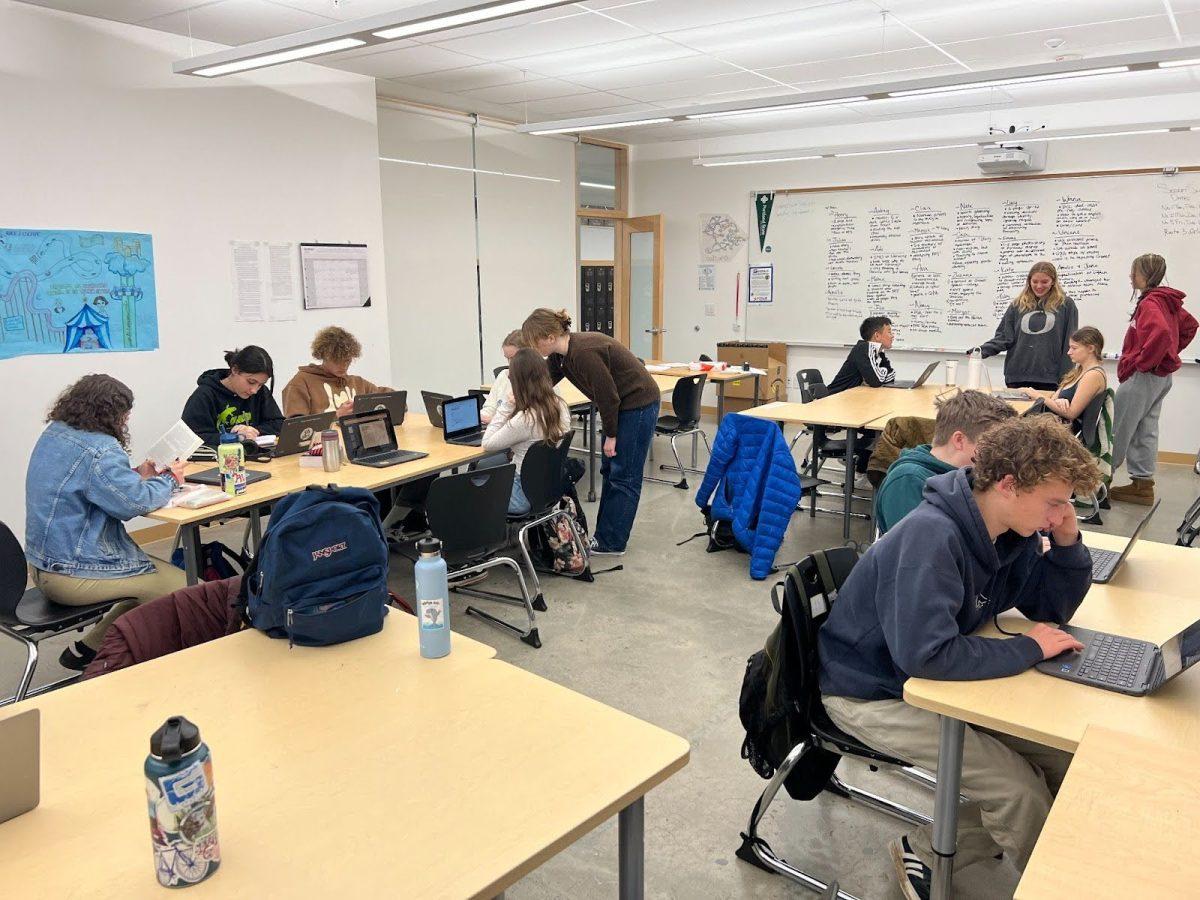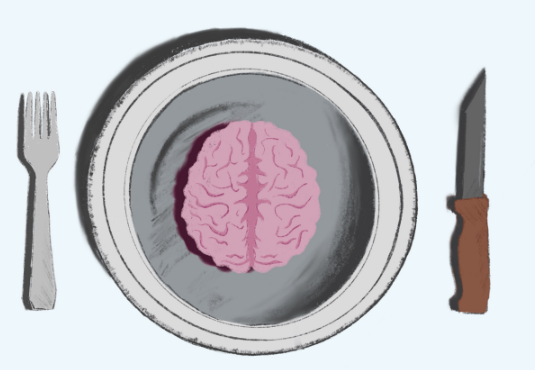As the lockdown drill sequence plays over the loudspeakers, Walter Hollands prepares my Environmental Science class for our biannual lockdown drill. Remarks of fear slice through the silence as we all shuffle into the corner of our classroom. “I never heard of anything like this when I first started teaching,” says Hollands. My classmates disguise our shared anxiety with humor—some suggest obscure hiding places, and others boast that they would fight the school shooter.
Down the hall, Biology teacher Amy Polzin quiets the echo chamber of nervous whispers from her students. As she locks the door and closes the blinds, the tactics remind her of the lockdown she led at Reynolds High School in 2014.
Then, she was protecting her students from a gunman in the building. ]“We were able to get over 2000 students locked down in under 80 seconds,” says Polzin. That day, one student died from gun violence on the schools’ campus. “While I hate the fact that we have to do (lockdown drills) … in the horrible chance that something happens here, we know what to do.”
Twice a year, Grant conducts school-wide lockdown drills. Oregon law mandates these drills across its school districts despite the lack of evidence to prove their effectiveness.
Lockdown drills contribute to the anxiety that school environments already create. Grant’s safety strategies cannot come at the sacrifice of the community’s psychological well-being. But, at the same time, the ongoing gun violence crisis plaguing every American community needs to be addressed across school districts.
As a rise in fears of gun violence contributes to the rising stress related to lockdown drills, schools must reconsider their reactionary safety tactics. The collateral consequences of lockdown drills can be minimized by pressuring the Oregon legislature to enact proactive gun safety laws and by expanding school mental health resources.
The mass shooting at Columbine High School in Littleton, Colorado, in 1999 led to the standardization of lockdown drills across the U.S. The shooting was one of the deadliest in American history, and it forever altered the way that schools prepare for violent incidents.
Oregon is one of at least 40 states that mandates these drills. Students are trained to be silent and move away from sight. Teachers are instructed to lock classroom doors, turn off all lights, maintain silence and take roll.
The inconsistency between drill procedures across the country contributes to their ineffectiveness. While some states, like Oregon, stick to simpler procedures, others employ simulated gunfire and pretend gunmen. “I’ve seen the videos and read articles about other places that do those really extreme versions of an actual active shooter making noises,” says Polzin. “To me, terrifying students is not helpful and is only more traumatic.”
My earliest memory of a lockdown was in third grade. There was an intruder on campus, and though he was without any weaponry, everyone huddled into classrooms and hid out of sight. I recall our teacher reminding us of the simple steps, his voice staying monotone as we wept.
The tactics implemented in Oregon are meant to be practical procedures that the school could follow in an actual violent incident. Vonnie Core, a Grant Campus Safety Agent, says, “(Students) know better than anybody does as far as what the drills should look like because you guys have been doing it most of your lives.”
In 2018, the social climate around gun violence shifted drastically as the world grieved the 17 victims of a school shooting in Parkland, Florida. Heavy media coverage sparked widespread outrage about the incident at Marjory Stoneman Douglas High School and the threat of gun violence at schools.
The survivors of Parkland bravely transformed their outrage into action and organized one of the largest protests in American history, a demonstration called “March for Our Lives.” The march mobilized millions of people across the U.S. in support of ending gun violence.
Although the mass shooting and its civic response was one of history’s clearest demands for legislative action, few subsequent changes were made to combat gun violence.
School shootings are only a small fraction of the crisis; Everytown for Gun Sense in America reports that over three million children are exposed to gun violence per year in the country. Significant gun sense legislation can prevent this number from growing larger.
Although school shootings are rare, student fears of gun violence on campus are a valid response to what they are witnessing in the media and in their local communities.
People of color are more likely to experience gun violence within their lifetime, making mock active shooter scenarios disproportionately harmful to the psychological safety of Black and Latine students.
Everytown reports that when rates of gun violence surged during the COVID-19 pandemic, more than 85% of that increase took place in predominantly Black and Latine neighborhoods. Returning to school post-quarantine and readjusting to lockdown drills is only more difficult for those who experienced increases in violence.
Grant Principal James McGee sees firsthand the impacts of lockdown drills on students and staff. “So, can lockdown drills cause psychological issues for students? The answer is yes,” says McGee. “We’re trying to find ways to mitigate that.”
Although Grant’s safety team acknowledges the psychological consequences of lockdown procedures, they are still executed twice a year in accordance with state guidelines.
Increasing rates of gun violence have made students more compliant with drills, as it may feel more likely that the tactics will need to be implemented. McGee says, “People take drills more seriously than they used to because it used to be more of a rare occurrence that violence could happen at school.”
Higher rates of compliance with these drills don’t indicate that students are safer because of them.
Everytown for Gun Safety in America reports that lockdown drills are associated with a 42% increase in stress and anxiety.
Students and staff at Grant experience this increased anxiety. Rachel Fealk, an English teacher at Grant, taught at Reynolds alongside Polzin in 2014. She says, “After this year where we were all at home, I didn’t even realize how much of my brain space (this fear) took up.” Although Fealk does not think of her experience at Reynolds on a regular basis, lockdown drills usually resurface the trauma.
Polzin shares the increased feeling of anxiety during drills. She says, “Every time the drill happens, my heart is in my throat beating extra hard.”
While coping with their own emotional reactions during lockdown drills, Fealk and Polzin are still required to guide classrooms of over 30 students through the protocols—unaware of whether or not their students could be experiencing similar stress. “It’s such a hard thing that I know when these drills happen that so many students could be having a reaction like mine,” says Polzin.
Students who attended Beaumont Middle School in 2019 may be among those who struggle with the psychological consequences of lockdown drills. Throughout freshman Julia Barry’s 7th-grade year, she recalls frequent lockdowns that were not announced as drills until after the procedures were complete.
During one of the drills, Barry was in hiding with 6th-grade students who were inexperienced with the tactics. Despite being a student herself, she felt a responsibility to comfort and protect her younger peers. “I was trying to make it so I could block the sixth graders from anyone who came in,” says Barry, “We were all scared to even breathe in case anyone in the hallway could hear.”
Freshmen Dani Gollier and Lucy Zimmerman attended Beaumont with Barry, and share similar experiences. Gollier says, “I remember the (drill) would go off and these kids in my class would just start sobbing … everyone would get mad at them because they were gonna get us found.”
Zimmerman recalls how her teachers would attempt to protect their class during lockdowns, including those she has had at Grant. “I feel like the teachers feel that they have a duty to stand by the door with whatever they have and be ready,” she says, recalling the makeshift weaponry that her middle school teachers once crafted. Zimmerman adds, “That doesn’t sound like a fun thing to have to do.”
For teachers who are survivors of gun violence and for those with families waiting at home, being tasked with protecting students from violence is particularly difficult. Karen Doersam, a science teacher at Grant, experienced violence on campus while working at another school. She says, “I think for every teacher, we didn’t go into (teaching) thinking this would be our obligation.”
Preparing oneself to serve as a shield for bullets is not in a teacher’s job description, and learning how to hide from them should not be a typical aspect of student life.
These unprecedented responsibilities are consequences of the unregulated right to bear arms. Youth are experiencing a collective trauma where we are either the targets of violence or bracing ourselves for the threat of it.
I don’t walk into Grant every morning worried that violence could affect my school day, which is partially a product of white privilege. However, I am heavily aware of which classroom would be ideal to be in during a violent incident, and I can easily identify and recount where all of the windows, exits and best hiding spots are—even in the hallways.
“I’d really love to be able to go into a classroom feeling confident that there’s no harm going to be held to any person,” says Doersam.
While Oregon law continues to mandate these lockdown procedures, Portland Public Schools have the capacity to adjust the safety strategies to minimize their consequences. Elementary and middle schools are less likely to experience violent incidents, and therefore should not work to achieve the same level of preparation as a high school or college. Ensuring that drills are developmentally appropriate between grade levels is just the first step.
PPS protocols directly inform those at Grant. Cynthia Roberts, the Grant Business Director, says, “The idea is that there is a standard for these safety protocols that is determined by PPS, and the schools have to carry them out.”
Although McGee and Roberts are able to communicate with a district counterpart to voice concerns with the drills, there is little wiggle room within the strategies themselves to adapt them to our community’s needs.
Students and staff arrive at Grant every day with a host of traumas and experiences that the administration does not accommodate, either because of a lack of awareness or a lack of resources. Until significant gun safety legislation is implemented, Grant will need to widen its social support resources in order to lessen the community impacts of lockdown drills.
Since Governor Kate Brown’s first term in 2015, Oregon has enacted a series of gun violence prevention bills. One of which requires adjudicated dating abusers to relinquish any firearms in their possession, which eliminates what was called “the boyfriend loophole.”
Advocating for the bill pertaining to domestic abusers was one of my first public testimonies. It was one of the only bills that I have testified or lobbied on behalf of that was later passed.
Many of the most essential and life-saving bills are still yet to reach Brown’s desk.
Gun safety laws coupled with mental health support proactively prevent violence from occurring. “I don’t think having metal detectors or increased police presence can help us be safer in the moment,” says Polzin, “I think it’s the connections that we have with each other that really end up leading to the most violence prevention.” Smaller class sizes and smaller caseloads for counselors can help Grant community members form these connections.
Grant relies heavily on its counseling staff to provide care for students. “When we practice drills, if there are issues, we encourage students to talk to their counselors about it,” says Roberts. However, counselors are overwhelmed by caseloads in an overcrowded school, and are not equipped with the resources to properly advocate for every student.
The Grant counselors and the school social worker declined to comment on these matters, several explaining that they were too busy to meet.
Survivors of gun violence exist in every sector of the Grant community. “I want students to know that I’m sharing my story because I think it helps everyone realize that these things do exist in the community,” says Polzin, “The more that we can acknowledge that (violence) exists and see each other, the more we can move forward.”
As our legislature continues to procrastinate passing essential bills, communities will need to continue adapting to the gun violence crisis in the U.S.
McGee says, “Especially where we are right now with so much going on … (impacts of lockdowns) are a problem. But pretending like it cannot happen is a bigger problem, and we need to make sure that if something happens, we have prepared our staff and our students on protocols.”
Translating the reactionary protocols from lockdown drills to trauma-informed safety strategies requires increased support for those who have already been affected by gun violence. School shootings may be rare, but they have lasting impacts on direct victims and surrounding communities. “It was one of those things where I’m the type of person who thinks ‘this is never gonna happen to me,’” says Fealk, “And then it did.”

Providing open conversation spaces about lockdown drills throughout the school year can open lines of communication for students to express feelings of anxiety or stress. “I think there’s definitely a need for people to talk about it,” says Gollier, “I just don’t feel like there’s a space to do that.”
Ultimately, there should be no need to practice self-protection strategies when it comes to gun violence. Complacent legislators should be the ones who are proactive about protecting student lives, not the 14-year-olds who are hiding under their desks in science class.
“Lockdowns are ingrained as such a normal part of society, but really they shouldn’t be,” says Barry. “It’s weird that it’s accepted as a normal part of school life that you have to prepare for someone to come in and shoot you.”
Active shooter drills are traumatizing our generation, and we shouldn’t have to live in a world where they are necessary. But, as we face America’s escalating gun violence crisis, Grant must continue to practice trauma-informed safety strategies and widen the supports that mitigate their impacts.
Lockdowns may not be effective in saving lives, but we cannot risk finding out that we are unprepared without them.






























